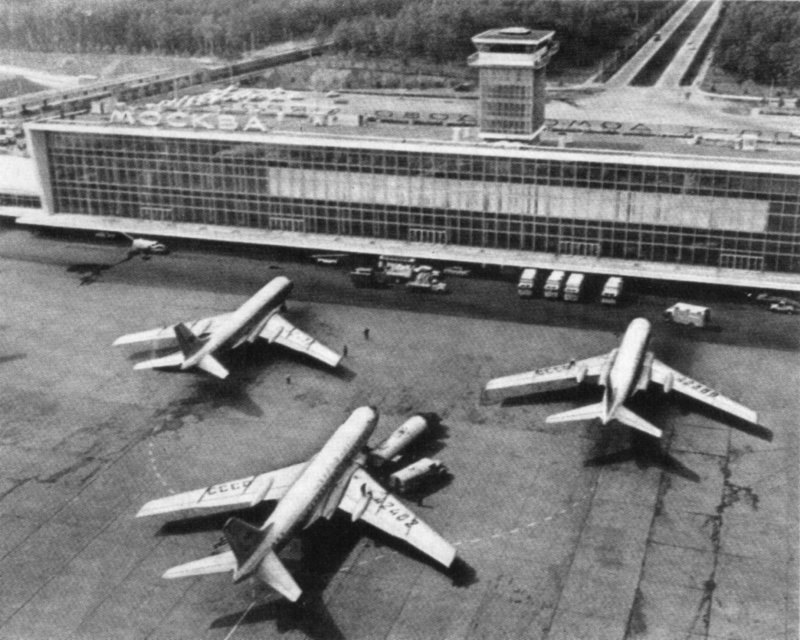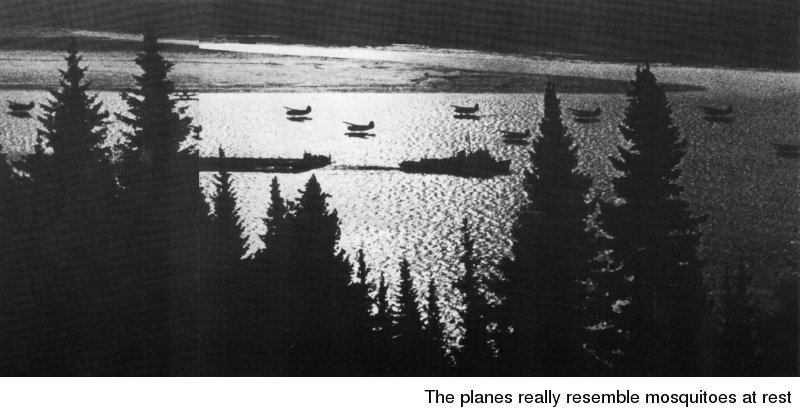I met an elderly musician in the waiting room of Domodedovo Airport. This was to be his first flight. I could see he was nervous and tried to cheer him by indicating the passengers lining up for the flight to the distant Chukotka Peninsula. A grandmother and her restless five-year-old grandson who kept trying to slip away from her were in the center of the line. She was carrying a braided chain of yellow onions, a small milk pail, something tied up in a kerchief and a red plastic car. The old woman was as unperturbed as if she were going by horse and wagon.
"A person gets used to anything," my companion said and added more confidently: "You know, it took time for people to get used to trains, too. The first trains between St. Petersburg and Moscow carried passengers free of charge for a couple of days. They were afraid of the trains and nobody would buy a ticket."

In our country people became accustomed to planes as a means of transportation in a very short time. Fifteen years ago flight passengers were either going on business trips, to weddings or to funerals. Everyone flies nowadays: old and young, students, schoolchildren and vacationers. Fifteen years ago Aeroflot, the Soviet airline, carried eight million passengers annually. Today the figure stands at close to sixty million. This, according to statistics, puts 12,000 persons in the air at any given moment of the day or night. Some are flying to Africa or America, some to a remote spot in the Soviet Union that is unaccessible by train, reindeer sled or even on foot.
However, passenger flights are only a part of the picture. Planes carry matrixes to all corners of the country so that all the leading central newspapers appear at the same time they do in Moscow. I saw trucks and tractors being loaded into a large cargo plane. Its destination was one of the distant construction sites of Siberia. Each day planes take off to forecast the weather, to spray the fields and deliver cargo to the crews of winterers in polar regions. Schools of fish are located from the air, and planes help spot forest fires. Thousands of aircraft are in the service of geologists. At the first SOS planes come to the aid of fishermen trapped in an ice field. Fresh fruit and vegetables from the south are flown to the rest of the country. Live fish are transported in specially-equipped planes and set free in new areas. Much is being written about the oil and natural gas deposits of Tyumen Region. These Siberian oil fields would never have been discovered or developed without the aid of planes, which alone were able to deliver men and machinery to this swampy region.The same holds true for many other remote areas of the Soviet Union.
Aeroflot was founded in August 1923, when the first small plane carrying six passengers took off from Moscow for Nizhny Novgorod, with the railroad line below to keep it on course. I went to see Yakov Moiseyev, the pilot of that flight. He is hale and hearty and recently repeated the flight (as a passenger, naturally). I asked him about his impressions. This is what the first Soviet civilian pilot said: "There's really no comparison. That was a four-hour flight, and we made it now in less than an hour. We flew a German Junkers-13, but this is a Soviet plane, and it's some plane! I'd give anything to fly it, but you can't bring back your youth. Do you know what a ticket cost for that first flight? Four million rubles! That was a time of postwar inflation."
Aeroflot came into being when the Soviet Union was engaged in construction on a nationwide scale. Its progress charts the progress of the entire country. So much has happened in the history of aviation between that imported Jun-kers-13 and our newest planes. There were the flights of Valery Chkalov, the rescue by air of the crew and passengers of the Chelyuskin, the non-stop flight from Moscow to the Far East of three women flyers, the names of our well-known airplane designers and of the fighter pilots who downed the nazi Junkers over our country during the Second World War, the first jets, the first helicopters and the first transcontinental flights.

I recently observed the test flight of a supersonic passenger plane. We newspapermen flew alongside the supersonic bird, watching it take off, turn and then raise its nose as it prepared to zoom away. Soon after billboards leading to the airport showed the sleek, long-beaked plane. The message read: "2,500 km per hour." Which means supersonic flights will one day also become an accepted way of travel.
We say that planes have become a part of our life. This is an unquestionable truth. However, only by flying over our land for some time (I did so constantly for eighteen months), does one really grasp the meaning of these words. In planning my trips I never questioned the possibility of reaching my destination by air. Today one can reach most of the remote areas of our country at incredible speeds. I was always able to get a helicopter or a small plane for shooting film. This is really a victory if one thinks back to the beginning and that first foreign-made Junkers-13.
I chose these photographs of Domodedovo Airport in Moscow and a distant airport on the Irtysh River near Khanty-Mansiiskfrom among so many. Everyone knows Domodedovo Airport. This picture was taken from a helicopter just before three TU-104s took off. I would like to comment in greater detail on the second photo.
When our small plane landed on the Irtysh River the p.a. system blared: "Passengers for this flight will please proceed to the raft!" The passengers all followed instructions. Five minutes later the little plane took off from the water for some distant settlement.

There is more water than land in these parts. That is why the planes all have pontoons instead of wheels. These planes carry passengers, cargo for the oil-field workers, pelts, food, newspapers, pack horses for the geologists, fish and mail. People in the settlements who have never seen a car or a train have known these small planes all their lives. A recent innovation has made this type of plane a good fire-fighter in wooded areas. It lands on a river or lake and then draws half a ton of water into its pontoons as it skims along for the take-off. Rising over the burning forest, it sprays the water and then returns for more, since there is always a lake nearby.
